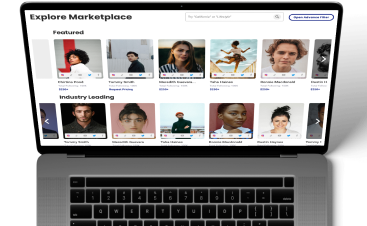The Internet revolutionized how brands interact with their customers through digital communities. In this age of rapid and widespread technology, leveraging the power of social media to build an online presence is an integral part of any successful business strategy. Through the formation of digital communities, businesses can keep in direct contact and engage in meaningful conversations with their most important asset—their customer base. But what exactly are these powerful online spaces capable of? And why make the effort to create them? Read on for a comprehensive overview of why brands rely on building strong digital communities for success.
What is a Digital Community?
A digital community is a group of people who interact and engage with each other online around shared interests, goals or values. Digital communities can take many forms, such as online forums, social media groups, chat rooms, blogs and other platforms.
Digital communities offer a space for people to connect and engage with others who share their passions, interests and goals, regardless of geographical location or other barriers.
Digital communities allow people to connect and share ideas with others with similar interests or goals. Members of digital communities can communicate with each other, share information and build relationships through digital means such as text, images, videos and audio.
Digital communities can also be a powerful tool for social activism, collective action and knowledge sharing. In addition, members of digital communities can collaborate and work together to achieve common goals or address shared challenges.
 Who Were the Early Adopters of Digital Communities?
Who Were the Early Adopters of Digital Communities?
As this article in Higher Logic states, Stewart Brand, a writer and philosopher and Larry Brilliant, a physician who previously served as a director at Google.org, initiated the first documented digital community. The platform’s initial purpose was to establish a dialogue between writers and readers of the Whole Earth Review. However, it didn’t take long for discussions to expand, resulting in the creation of a groundbreaking community. It was even the birthplace of the term “virtual community,” coined by Harold Rheingold.
According to The WELL’s about us page, it is “widely recognized as the primordial ooze where the online community movement was born.” WELL quickly emerged as a gathering spot for writers, journalists, futurists and intellectuals, as well as Deadheads, the most passionate fans of the Grateful Dead. They utilized The WELL to collaborate and talk about all things related to the Grateful Dead.
However, it is accepted that the first major industry to adopt digital communities was the technology industry. Online forums and communities for technology enthusiasts and developers emerged in the early days of the Internet, providing a platform for people to connect and share information and knowledge about technology.
The widespread accessibility of the Internet in the 2000s led to an increase in the prevalence of digital communities. Social media platforms such as Twitter, LinkedIn and Twitter provide new avenues for individuals to connect and interact with others who share similar interests, goals or values. These digital communities have become commonplace across various industries and topics and have continued to develop, revolutionizing how people connect and engage with each other online.

Types of Online Communities
Many online communities are available today, all of which provide their own unique set of benefits and advantages. Here are Glewee’s top 10:
- Brand Communities – These online spaces become hubs for brand loyalty where users can discuss products or services, get customer support and share stories in a connected environment.
- Learning Communities – These are great spaces for users to come together to learn new skills, discuss education-related topics such as coding, arts and mathematics and share knowledge.
- Networking Communities – These networks exist specifically for networking, connecting professionals in similar industries to find mentorships and forming meaningful professional relationships to progress their career paths.
- Social Communities – Arguably one of the most popular types of communities today, these networks allow users to connect with friends, family members and acquaintances worldwide by providing an easy way to stay connected through sharing posts/messages/pictures.
- Fan Communities – Founded on shared interests such as sports teams, bands, tv show, etc. These online communities provide a place to talk about a singular topic.
- Insight Communities – Brands create insight communities to gather data and learn more about their target audience.
- Membership Community – This type of community has been gaining traction recently due to its ability to give exclusive access to members-only content, such as forums & blogs discussed among peers within that same circle. Typically, a membership purchase is required.
- Communities of Circumstance – These kinds are forged when encountering once-in-a-lifetime experiences, especially among those individuals facing hardships like those undergoing life-threatening illnesses providing support.
- Local Communities – Local communities revolve around a particular geographic area. Brands with a brick-and-mortar location might be interested in this type of community.
- Activism Communities – Mainly focusing on current global issues discussed topics debated among users featuring opinions own personal experiences internet views point bringing voice light opposition worthwhile causes betterment wellbeing society worldwide umbrella approach defining movements intending to raise awareness concerning grave matters influencing development rights minds citizens alike.
To learn more about types of online communities, please visit Thinkific.

Why Do Brands Create Digital Communities?
Brands can benefit from having digital communities in several ways, including:
- To Build Brand Loyalty: A digital community can create a sense of belonging among members, increasing brand loyalty. Members who feel connected to a brand are more likely to repeat customers and recommend the brand to others.
- To Foster Customer Engagement: A digital community can provide a platform for brands to engage with their customers and gather feedback. By listening to customers’ needs and concerns, brands can improve their products or services and create a better customer experience.
- To Create Brand Ambassadors: Digital communities can be a source of brand ambassadors who are passionate about the brand and willing to promote it to others. Brand ambassadors can help spread the word about the brand, increase its reach and build trust with potential customers.
- To Drive Sales and Revenue: A digital community can be a platform for brands to promote their products or services to engaged and interested audiences. Digital communities are members who are part of the community and may be more likely to purchase products or services from the brand.
- To Learn About Their Target Audience: By observing and engaging with their digital communities, brands can gain insights into the needs, preferences and behavior of their target audience. This can help brands develop more effective marketing strategies and create products or services that better meet the needs of their customers.

What Do Brands Need To Do Before Creating a Digital Community?
Creating a successful digital community is more complex than it seems. It requires an immense amount of preparation and dedication. Brands must recognize that building an online presence through a digital community needs as much attention and detail as establishing one in the real world.
Before creating a community, brands need to consider the following three things:
- Identify the Purpose and Objectives of the Community: It is important to identify the purpose and goals before creating them. Brands must ask themselves why they want to create a community and what they hope to achieve. The purpose of the community should align with the brand’s values and benefit the target audience. For example, a brand could create a community to provide a space for its customers to connect and share experiences or to build a community around a shared interest or cause.
- Develop a Community Management Strategy: Managing a community requires a dedicated and consistent effort. Brands must develop a community management strategy that outlines how they will engage with members, moderate content and resolve disputes. They should also have a plan in place to handle negative feedback or crises that may arise. Community managers need to be trained and equipped to handle the day-to-day management of the community.
- Determine the Resources Required to Create and Sustain the Community: Creating and maintaining a community requires time, money and personnel. Brands need to determine what resources they can allocate to the community and what the return on investment (ROI) will be. Brands must also consider the platform they will use to create the community, such as a social media platform or a dedicated forum on their website. The platform should be user-friendly and accessible to the target audience.

Here are the Common Mistakes that Brands Make When Creating Digital Communities:
Brands often fail to create digital communities because they need more resources and knowledge to truly understand and interact with their target audience. Digital communities require a high level of engagement and dedication, which can be hard to consistently maintain without good knowledge of your customers’ specific interests.
The biggest challenge in successful digital community building is understanding how people use your product or service. To create an engaged community, you need to know exactly why people come back repeatedly—what can excite them about what you offer? A deep dive into analytics data gathered on customer behavior can provide clues as to what features draw visitors in and how people engage with those features over time.
Another common mistake brands make is creating a digital community that only promotes their products or services without providing real value to the community. This can lead to disengagement and a lack of interest from members, ultimately resulting in a failed community. Instead, brands should focus on providing community members with valuable content, resources and relevant experiences.
Brands need to be authentic and transparent when creating digital communities. Members want to know that they are engaging with a transparent and authentic brand. Brands that try to manipulate or deceive their community members will likely be exposed and lose their trust. Therefore, it is important for brands to be transparent about their intentions and to be open to feedback and criticism.
Often when a brand fails at creating a community online, it’s due to inconsistent community management. Community management requires consistent and active engagement. Brands that consistently fail to engage with their community members risk losing their attention and engagement. Brands also need to be consistent in their messaging and tone and respond to members promptly and professionally. Consistent community management helps to build trust, loyalty and a sense of community among the members.

Where do Brands Find Digital Community Members?
Recruiting members for a digital community can be a challenging task, but it is essential for building an engaged and supportive audience. There are several effective strategies that brands can use to recruit members for their digital communities. One such strategy is leveraging social media. Brands can use social media platforms to share information about their community and use relevant hashtags to reach a wider audience. They can also use paid social media advertising to target their ideal audience and encourage them to join.
Another effective strategy for recruiting members for a digital community is offering incentives.
For example, brands can provide the following:
- Exclusive content.
- Early access to products or services.
- Discounts to entice people to join their community.
Incentives should be authentic and align with the interests and needs of the target audience and be communicated to potential members.
Partnering with influencers can also help brands to reach a wider audience and attract more members to their digital community. Influencers with a large following in the brand’s target market can promote the community to their followers, increasing brand awareness and attracting new members. Therefore, it is important to collaborate with influencers and their followers who align with the brand. (Note: check out Glewee’s Audience Insights tool for more information on identifying an influencer’s audience.)
While influencer marketing works very well for brand communities, recruiting members for a digital community requires a strategic approach that considers the needs and interests of the target audience. By leveraging social media, offering incentives and partnering with influencers, brands can attract and recruit members to their digital communities. However, it is important to remember that recruiting members is only the first step; brands must also engage with members, provide value and build relationships to maintain an active and engaged digital community.

How Do Influencers Help Brands Create Digital Communities?
Influencers can be powerful allies for brands looking to build online communities. By partnering with social media influencers who align with their values and target audience, brands can reach a wider and more engaged audience, provide credibility, offer unique content and foster engagement within their community.
Here are a few ways influencers can help:
- Reach a wider audience: Influencers have built-in audiences that brands can tap into to attract new community members. By partnering with influencers who align with their values and target audience, brands can reach a wider and more engaged audience.
- Provide credibility: Influencers often have high credibility among their followers. By endorsing a brand’s community, influencers can lend credibility to the brand and help build trust and loyalty among potential community members.
- Offer unique content: Influencers can help to create unique and valuable content for a brand’s community. By collaborating with influencers on content creation, brands can offer their community members fresh perspectives and ideas they may not have access to otherwise.
- Foster engagement: Influencers can help drive a brand’s community engagement. By participating in discussions, hosting events and sharing their experiences, influencers can encourage their followers to get involved and engage with the community.
Digital communities have become a cornerstone for success for many businesses. The key lies in leveraging the massive reach and power of social media. Through creating digital communities, companies can bring customers into the brand world, engage with them on a deeper level, gain valuable insights into their needs and wants and create a strong sense of loyalty and trust that can be difficult to find elsewhere. From early adopters like Amazon to modern-day giants such as Twitter, large and small businesses are reaping the rewards of forming virtual spaces where consumers congregate to discuss products, experiences and meet like-minded individuals. Hopefully, this blog post has provided an insightful overview of why businesses rely on building strong digital communities for success – so don’t wait – get out there and start building yours today.
At Glewee, we believe that digital community building is the key to success for many brands. With our platform, you can create communities where customers become ambassadors and advocates of your company. We also provide tools for online conversation and collaboration with fans around the world — it’s like having an army of passionate supporters all in one place.
Our platform doesn’t just help bring people together, it helps increase brand loyalty leading to increased sales and expansion opportunities. Whether you want to launch campaigns or contests across multiple channels or engage with members from other countries, Glewee opens up a whole new level of customer engagement and connection.
Sign up today on our website and start building your own loyal fan-base!





